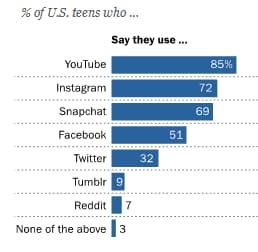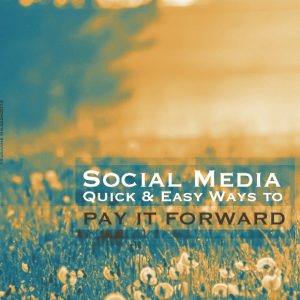— July 18, 2018

rawpixel / Pixabay
When it comes to marketing, we understand how important it is to build a trusting relationship with current and potential customers. Marketers spend hours perfecting the customer journey, analyzing the different touchpoints, personalizing their messages, and using data to find out more about their customers so they can target them more effectively.
But when it comes to the marketing that doesn’t interact directly with the consumer, it suddenly becomes less personal and more about hitting targets, updating spreadsheets and copy-pasting email templates with little to no personalization at all. I’m referring to the practice of link building, or outreach or authority building. It becomes a numbers game – how many links can we get? What does our backlink portfolio look like? What is our domain authority score? All important considerations, but where is the relationship building that marketing was built upon?
There’s so much overlap between what SEO professionals do and what PR professionals do, it seems only right to combine each other’s strengths to overcome weaknesses. While SEOs may put too much emphasis on numbers and links, PRs often don’t put enough emphasis on this. And while PRs focus on building relationships, positive coverage and brand awareness, SEOs often neglect this aspect, focusing on efficiency and targets instead. Whether you call it linkbuilding, outreach, authority building, media outreach, profile building, content amplification, influencer marketing, network marketing or community building, one thing is clear – relationship building should play the main role in activity if you want long term success.
Hitting More Birds with the Same Stone
Although the term ‘digital’ implies that we are dealing with a machine, in essence, digital marketing is no different to the traditional methods, where face-to-face relationships were key to success. Sure, we don’t have much face-to-face interaction, but at the end of the day, we’re still dealing with humans (for now). If anything, the access to data should allow for better relationship building as we’re able to find out information about people, businesses, and brands more easily than ever before.
The issue is that a lot of times, different channels fail to work seamlessly together. SEO works separately to PR, which works separately to social media, which works separately to content. There may be some communication between these but in many cases, not enough.
In an ideal world, each piece of content would be meticulously optimized by an SEO professional, it would contain the right boilerplate and brand terminology and would be pitched by PR professionals to high quality publications, with a link of course. It would then be amply shared across social media, tagging and mentioning all the right brands, building conversation and engagement. It would then be discovered by other high quality publications who would request similar high quality content and then links would keep on growing!
It sounds obvious when you write it down, but how many times does the PR team put time and effort into achieving an amazing piece of coverage, only for it to not contain a link to the website, or for it to be shared on social media without tagging the brand/company who wrote it? Or for the SEO team to go after backlinks, only to write thin content that doesn’t adhere to brand guidelines or use the correct PR boilerplate?
Take a Leaf out of the PR Book & Combine it with the SEO Book
The PR industry has always been about building relationships. Whether it’s your little black book of media contacts or the relationships you have built over time with journalists, the successful PR will be the one with the more personal relationships.
Digital marketers can learn a lot from this. Whether you’re in it to build backlinks and boost your Google rankings, or whether you’re looking to gain more social followers, or get your content out there, the fundamentals of good PR will play a key role here.
Of course, while PR professionals are superb at building relationships, they often overlook the more important aspects of SEO like backlinks and keywords. With many PRs having a background in journalism, the temptation is there to get creative with language and use lots of different terms, rather than sticking to what the SEO team has deemed a ‘target keyword’. But this is important. Spending hours writing an amazing piece of content only for it to have a short shelf life is a waste of time – let’s make it work harder by implementing some SEO best practice!
1. Find your influencers & create relationships with them: Finding influencers in the industry you’re targeting isn’t difficult, it’s just time-consuming. But take the time and it’ll pay off in the long run. You’ll find that focusing on influencers (i.e. people) as opposed to the publication (i.e. website) is a much better use of your time as often these influencers may write about multiple topics or for multiple sites. Once you find these influencers, engage with them, not by spamming their inbox with some cold copy and paste email requesting a link, but by actually reading what they have written, commenting on their content with insightful opinion, checking out their LinkedIn or Twitter accounts and getting to know them. See what else they have written about or vlogged about and start to get on their radar. Maybe send them some content that wasn’t written by you, but that they would find helpful, funny, insightful. When the time is right, your content will be the perfect fit for them and by that time you will have built a solid relationship.
2. React to current events: Be instantly ready to provide content or commentary on something in real-time and it’ll pay off. You will become a reliable source that bloggers and journalists can turn to when they need instant expert commentary. Taking your time to write a piece of content around a topic, optimizing it and keyword researching it, will not help you – the trick for good moment marketing is to be quick, be relevant and be there.
3. The press release is not dead: But it needs to be used for big news, and not just to try to get links or rank for keywords! If the press release is newsworthy enough and it is shared across the right platforms, then other sites will pick it up. If you’re issuing press releases but finding they don’t get picked up – ask yourself, ‘is this even newsworthy?’. For those really juicy pieces of content, have you considered using an embargoed release? i.e. a release that goes out to a few influencers before it is syndicated – again that influencer research has many uses.
4. Unlinked mentions: Using a tool like AHREFS, you’ll see where your brand is being mentioned without being linked. This could be your opportunity to build an initial relationship with someone who is already familiar with your brand. Rather than just contacting the website owner or the content author and asking them to add a link where they mentioned you, why not use this as an opportunity to offer something of more value? For example, a guest article, an interview, a new infographic or a piece of unique video content that you would create just for them? They’re already familiar with who you are as they have mentioned you, so it’s likely they will receive this content positively. So instead of just having a mention with a link, you could have tailor made content on their site that portrays your brand in a positive light and showcases your authority. And you’ll be building a relationship with the author, who may be interested in even more content further down the line.
5. Mentions of keywords: Buzzstream and Google Alerts are great for monitoring your target keywords. If you come across a fantastic piece of content that mentions your target keywords, what a lot of SEOs and PR professionals are doing is contacting the content author and offering up a quote or stat that may be of value, in exchange for a mention or link. This is a good tactic and one that focuses on quality over quantity. Again, taking this a step further would be to strike a relationship with the author, offer them a unique piece of content, offer to maybe run a piece of qualitative or quantitative research that delves into that topic even further, offering them some unique stats that are not available anywhere else, or offering up an interview with the CEO, for example, to delve further into the issues and provide a voice of authority on this topic. And not just as a one-time-thing, but if this publication tends to cover this topic often, then maybe your brand could become a spokesperson or a regular contributor, i.e. the person they turn to the next time they need authority on this topic.
6. Cross-Promotion: rather than offering a piece of content, why not suggest working together on a joint piece of research or a joint event where both parties win? You’ll still get your link or your mention or coverage, but at the same time you’re building a positive working relationship. If all goes well the first time, it will likely be the first of many projects to come and a chance to keep growing and perhaps adding more parties into the mix.
Relationships Are Worth It
When there are targets to hit, such as number of backlinks, mentions etc. the thought of having to spend time trying to build a relationship and trying to sound ‘human’ may seem like a waste for some. But in the long run it always pays off, and in fact it helps deliver better results. At the same time, let’s not forget about the fundamentals of SEO that could make our quality content work that much harder.
Digital & Social Articles on Business 2 Community
(30)
Report Post






